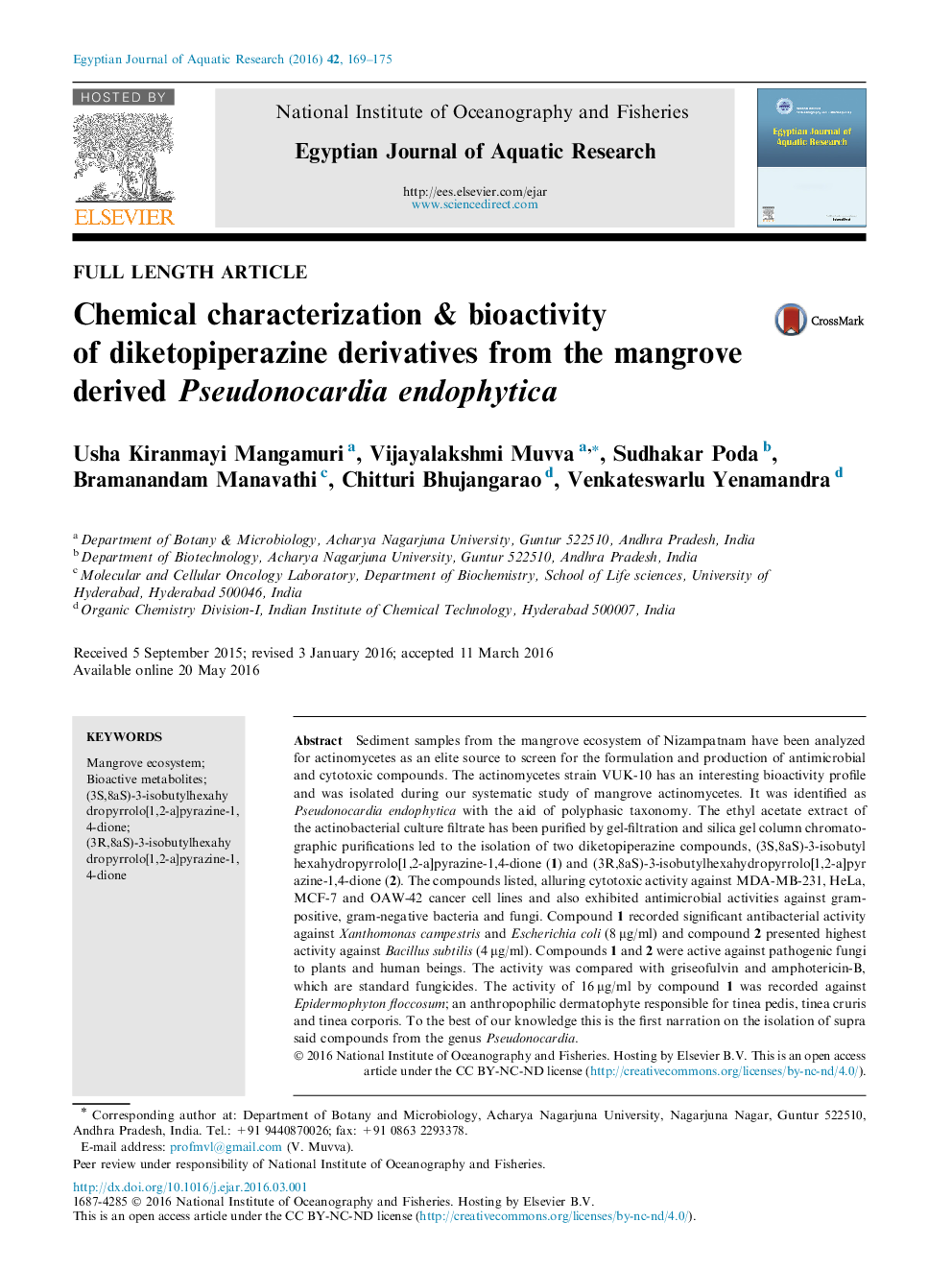| Article ID | Journal | Published Year | Pages | File Type |
|---|---|---|---|---|
| 4493038 | The Egyptian Journal of Aquatic Research | 2016 | 7 Pages |
Sediment samples from the mangrove ecosystem of Nizampatnam have been analyzed for actinomycetes as an elite source to screen for the formulation and production of antimicrobial and cytotoxic compounds. The actinomycetes strain VUK-10 has an interesting bioactivity profile and was isolated during our systematic study of mangrove actinomycetes. It was identified as Pseudonocardia endophytica with the aid of polyphasic taxonomy. The ethyl acetate extract of the actinobacterial culture filtrate has been purified by gel-filtration and silica gel column chromatographic purifications led to the isolation of two diketopiperazine compounds, (3S,8aS)-3-isobutylhexahydropyrrolo[1,2-a]pyrazine-1,4-dione (1) and (3R,8aS)-3-isobutylhexahydropyrrolo[1,2-a]pyrazine-1,4-dione (2). The compounds listed, alluring cytotoxic activity against MDA-MB-231, HeLa, MCF-7 and OAW-42 cancer cell lines and also exhibited antimicrobial activities against gram-positive, gram-negative bacteria and fungi. Compound 1 recorded significant antibacterial activity against Xanthomonas campestris and Escherichia coli (8 μg/ml) and compound 2 presented highest activity against Bacillus subtilis (4 μg/ml). Compounds 1 and 2 were active against pathogenic fungi to plants and human beings. The activity was compared with griseofulvin and amphotericin-B, which are standard fungicides. The activity of 16 μg/ml by compound 1 was recorded against Epidermophyton floccosum; an anthropophilic dermatophyte responsible for tinea pedis, tinea cruris and tinea corporis. To the best of our knowledge this is the first narration on the isolation of supra said compounds from the genus Pseudonocardia.
